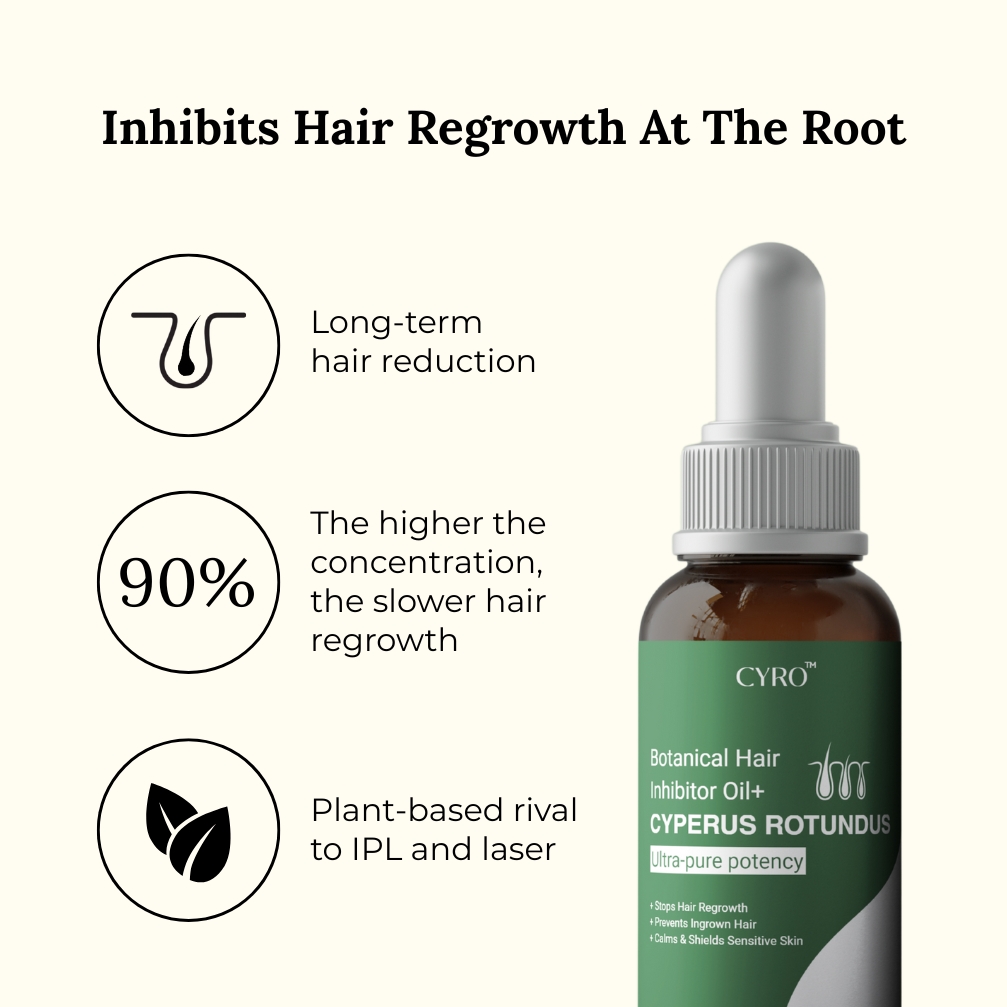5 Tricks To Keep Hair From Growing Back So Quickly

Why do we have so much body hair?

Androgen (a group sex hormones) are the main culprit behind hair growth
This group includes testosterone and a stronger type called DHT.
Why genetics?
Your genes decide your hair color, texture, growth speed, and thickness.
Why does hair never stop growth?

Which individuals are MORE PRONE to excessive hair growth?

- Cushing Syndrome: A condition characterized by high levels of cortisol, which can lead to increased hair growth.
- Congenital Adrenal Hyperplasia: An inherited condition where adrenal glands produce abnormal levels of certain hormones, including androgens.
- Androgen-secreting tumors: Although rare, tumors in the ovaries or adrenal glands can produce excessive androgens, causing rapid onset of hirsutism.
- Severe Insulin Resistance: This can lead to hyperandrogenism, potentially contributing to hirsutism.
- Thyroid Disorders: In rare instances, imbalances in thyroid hormones can lead to excess hair growth.
Below are 5 simple tricks will keep your skin smoother, longer.
#1. At-Home IPL Hair Removal
- (+) Anagen (active growth)
- (+) Catagen (transition)
- (+) Telogen (rest)
- (+)Exogen (anagen restart)
#2. Cyperus rotundus - Hair Growth Inhibitors oil

**Now you’ll wonder why you wasted so much on hair removal....and why you never heard of this sooner.**
Meet the real hero.......Cyperus Rotundus.
Cyperus Rotundus isn’t well known, but it has a special power: Prevent unwanted hair growth.
It naturally calms follicles, slows regrowth, and keeps your skin smooth and irritation-free.
With consistent use, you could ACTUALLY prevent hair from coming back at all!
Unlike harsh chemical methods, it’s 100% botanical, safe, and non-hormonal.
.
Shaving or waxing only keeps you smooth for a short time.
You shave, and just a few hours later that 5 o’clock stubble is already there.
Why?
Your hormones - like Adrogen and DHT (**yep, the ones we talked about last chapter**) - are in overdrive, making hair grow back fast.
Cyperus Rotundus is different.
Inside the follicle, it blocks 5α-reductase - the enzyme that turns testosterone into DHT. It doesn’t alter your hormones - only slows hormone-driven hair growth, like in PCOS or hirsutism
(**As a dermatologist, I can confirm this**)
.
In September 2024, the Health Journalist Lab ran a study with more than 1,000 women who had hirsutism or polycystic ovary syndrome (PCOS). The study aimed to test how well Cyperus Rotundus oil could slow hair regrowth.
Tests revealed that formulas with 65% potency or above kept hair from coming back for at least four weeks, proving it to be a solid long-lasting method.
While laser and IPL mean multiple expensive clinic visits, Cyperus Rotundus oil is simple to use and budget-friendly.
That’s why it’s a great choice for anyone wanting lasting hair reduction without the expense or hassle of laser and IPL.
.
How to Choose the Right Cyperus Rotundus Oil
When selecting an oil, look for:
- - High extraction purity (80%+ for real results).
- - Lab-tested safety (no harmful contaminants).
- - Non-hormonal formulation (safe for PCOS, sensitive skin, and long-term use).
- - Added soothing actives like vitamins or botanicals to calm irritation.
Cyperus Rotundus oil isn’t just another “hair removal hack”
it’s a safe, natural treatment that changes how you deal with unwanted hair.
#3. Hair removal Creams
- (+) It works
- (+) Saves time
- (+) Safe (Yes, safe. it’s 2025. Most creams now have way fewer harsh chemicals)
- (+) No burns or ingrown hairs like razors
- (+) No stubble or dark spots like trimmers
- (+) Some new 👉 natural-based creams include Cyperus Rotundus 👈 can remove hair + keep it from growing back for up to 3 months!
#4. Plucking/Tweezing
#5. Pro 2 in 1 Body shaver

Get our wellness newsletter
5 Tricks To Keep Hair From Growing Back So Quickly


